Adventure Lite
POST MORTEM
7/4/20254 min read
OVERVIEW
Adventure Lite was one of my earliest game design projects. A board game set to emulate the feeling of Pen&Paper RPG but more accessible, and with prepared adventures one could run without a DM.
It was bursting with ideas, wanting to do too much for its own good, but some of the systems designed for it are still a source of inspiration for me today.
Inspired by Darkest Dungeon, it tried to mix elements of combat, resource management, and town building.
Objectives
Emulate the feeling of pen&paper RPG without the need of a game master or any preparation, in a smaller format.
Create unique interesting dungeons with a lot of replayability and customization.
Create a game that feels both cooperative and competitive.
Challenges
Keeping in mind the number of cards needed to keep costs of the game low.
Creating a system for automation of monsters behaviour
HIGHLIGHTS
The automatic language system:
Combat in Adventure Lite sets the group of adventurers and monsters in a line determined by initiative. The positioning determines the order of play as well as spatial distance between characters.
Usually, tanks are in the front, fast assassins in the middle, and ranged characters at the back

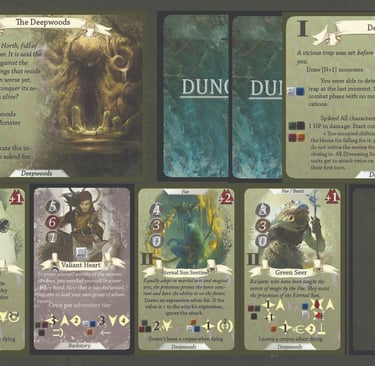
No Dungeon Master means monsters have to behave automatically and with some element of randomness.
This was achieved by designing a set of different behaviours which would trigger on the roll of a dice. Players would then read the behaviour of the attack on the monster's card by reading the following language:
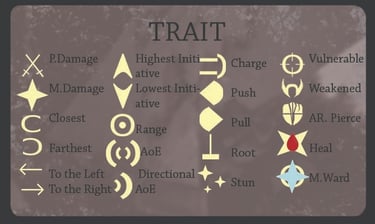

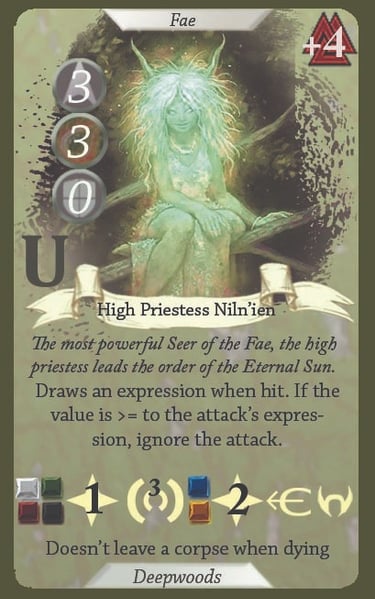

HIGH PRIESTESS NILN'IEN
3 Initiative
3 HP
Unique Monster / Fae
+4 Glory to killer
The most powerful Seer of the Fae, the high priestess leads the order of the Eternal Sun.
Draws an expression when hit. If the value is >= to the attack's expression, ignore the attack.
Expression: White/Green/Red/Black
Deal 1 magic damage to all enemies on each side within a range of 3.
Expression: Blue/Yellow
Deal 2 magic damage to the closest enemy on her left, and apply 'weaken'
Doesn't leave a corpse when dying.
The procedural dungeon system:
It is quite a boast to say that your boardgame has a procedural dungeon system.
Adventure Lite uses a rule of Dungeon Event decks and Monster Decks which are different each time.
Dungeon events can range from combat to an ambush opportunity, to meeting NPCs or finding a strange fruit. Players sometimes make decision and roll a dice to learn of the outcome.
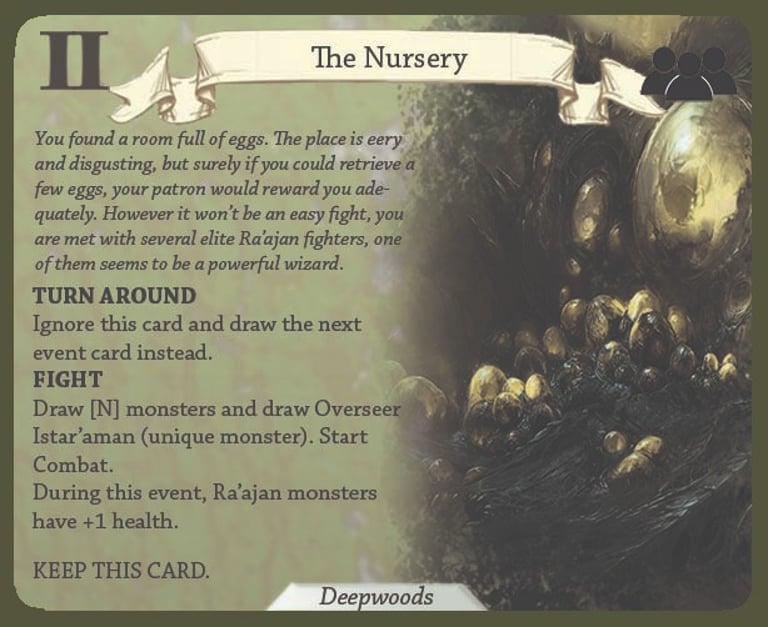
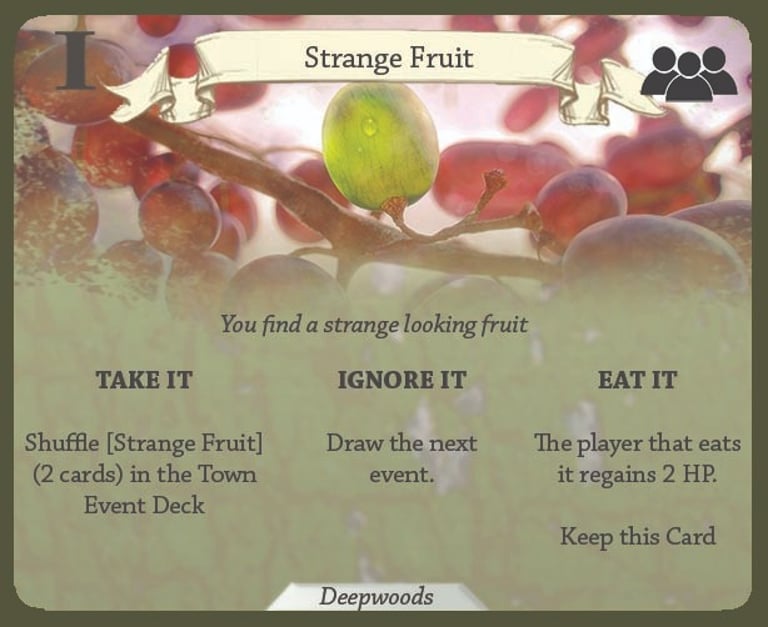
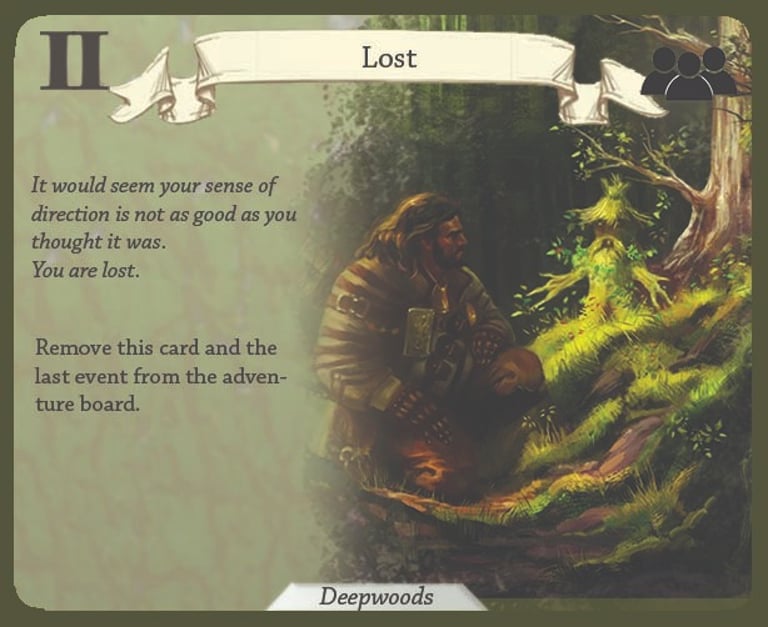
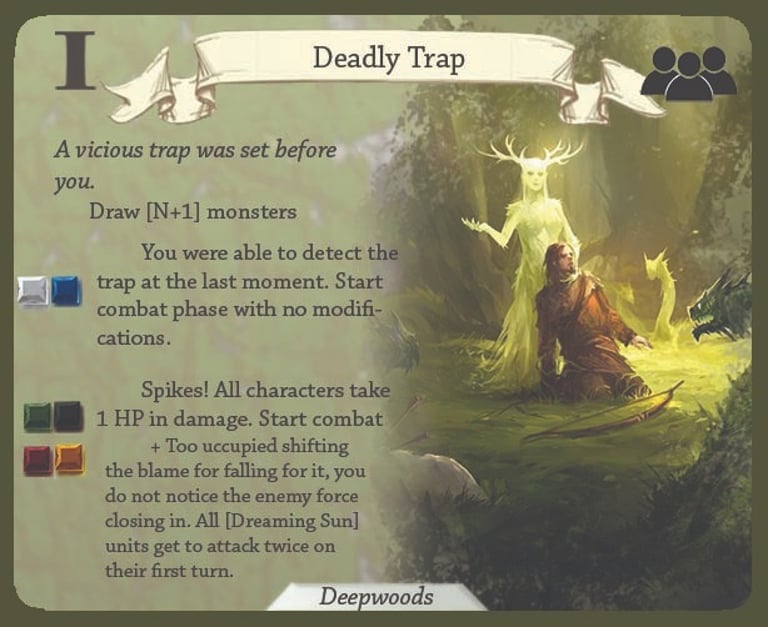




Dungeons are separated in 3 tiers. With more dangerous events and monsters being shuffled into the deck at each new threshold. Dungeon bosses even get a random 'artefact' out of 3 possibilities which affect their stats and one of their abilities.
You could run the same dungeon multiple times and not find yourself in the same encounter twice. This is even more true considering that players get random loot at the end of each encounter which affects their gameplay.
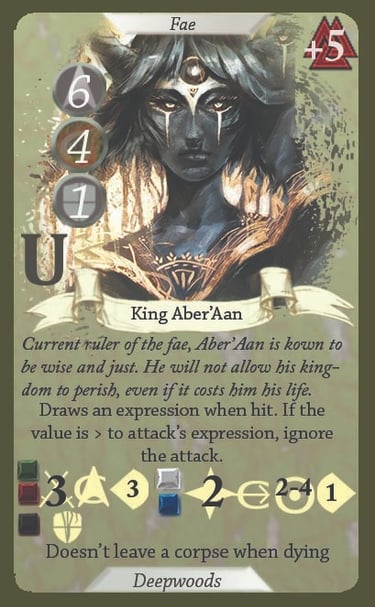

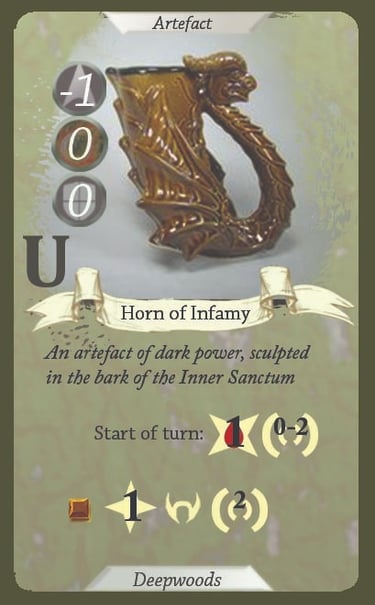

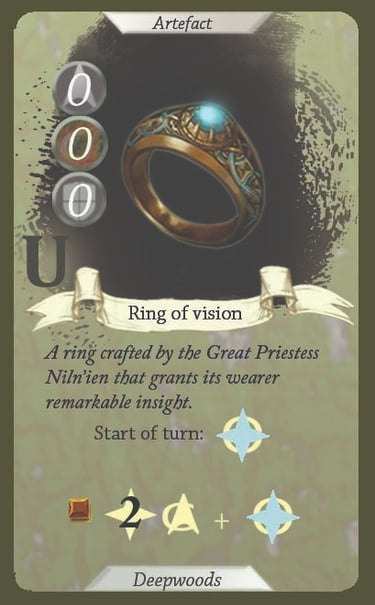

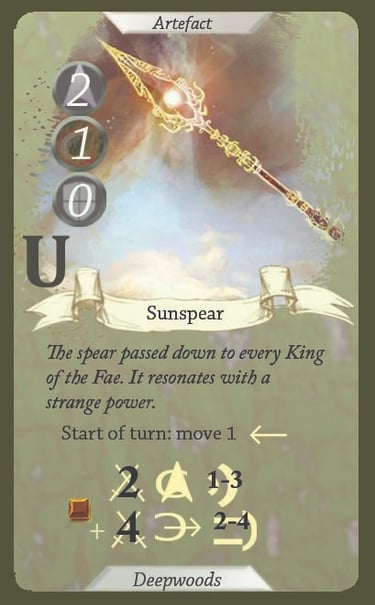

Traits & Equipment:
At the beginning of a game, players get to draft a character with a unique ability and a trait which affects their gameplay and also event choices. A character with the trait 'stress eater' might be obligated to eat the mysterious fruit in front of the road.
Equipment is added to this and adds a wide variety of possible builds.
Players can even acquire new traits and equipment through events and loot. For example, one can gain a negative 'fear of the dark' trait after an encounter with a scary spider in a dark tunnel.
Before battle starts, the dungeon boss draws 1 of 3 unique artefacts, changing his gameplay and adding to replayability.
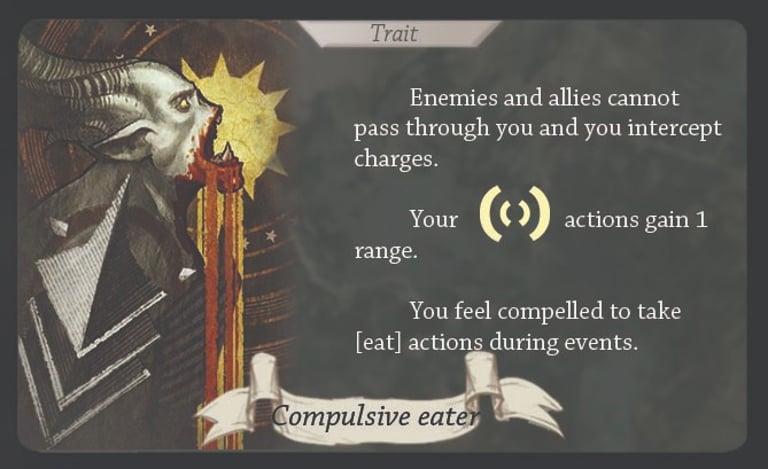
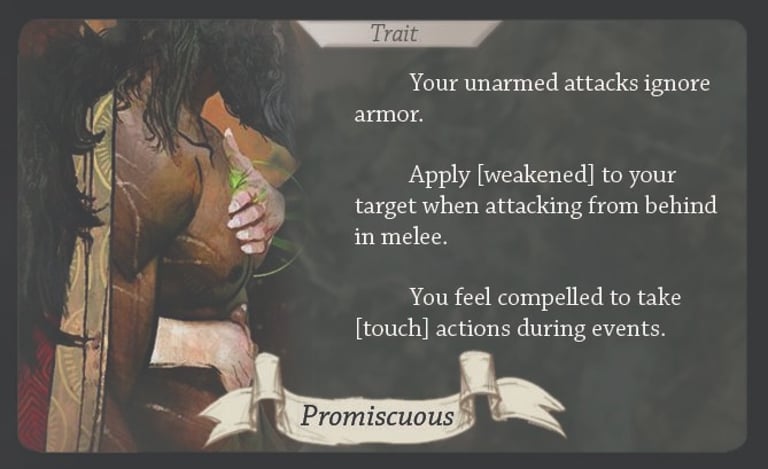
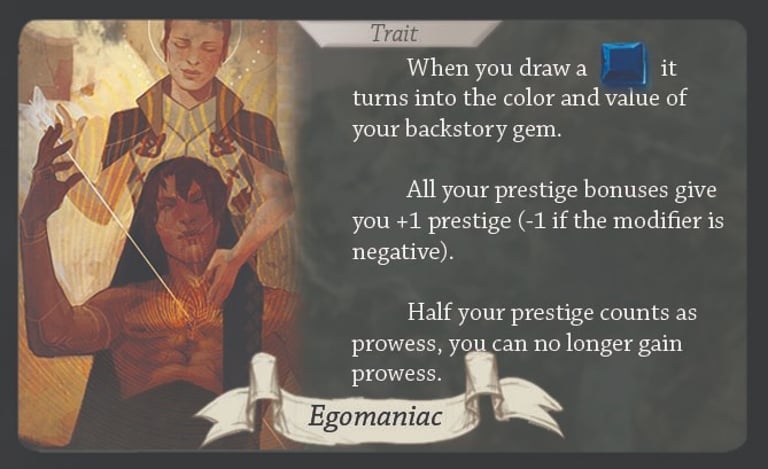
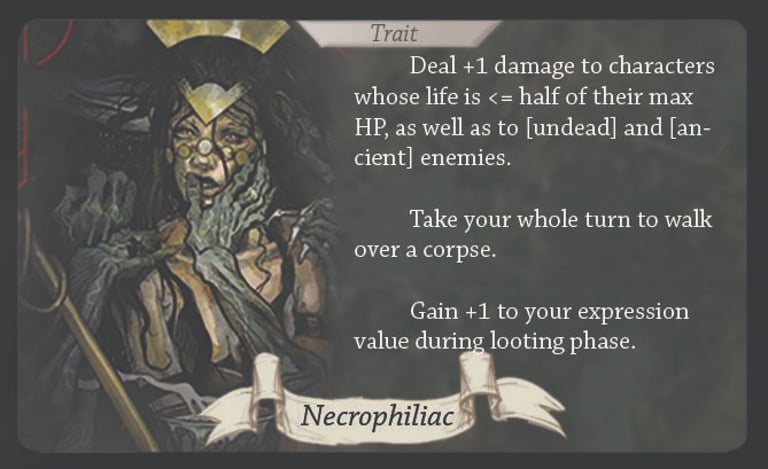




Wanting to do too many things at once:
On top of this all, the game was thought with a town management system, with its own town event cards, NPC helper cards and a political aspect, rival cities, travel events...
The game also wanted to be a competitive/cooperative experience, and players would gain victory points by individually slaying monsters, collecting set items, or simply becoming rich.
It was too much, too complex, and a cost addition to a board game.
In the end those systems were scrapped and reimagined for a potential sister game 'subterfuge', where only the town aspect would be explored.
In the end
Playtests showed that while the game was interesting to simulate on your own, once other players came in and you controlled only one character, the combat felt lacking in meaningful decisions, and was playing itself too much.
the competitive aspect of the game felt unfair as a result, on top of being distracting.
Still, the unique systems were interesting, players loved the lore transpiring from the cards and felt engaged.
It was a great early experience in game design, and some of the systems still inspire me today for new projects.
Connect
Let's collaborate on your next game design project:
damien.f.rodriguez@gmail.com
© 2025. All rights reserved.